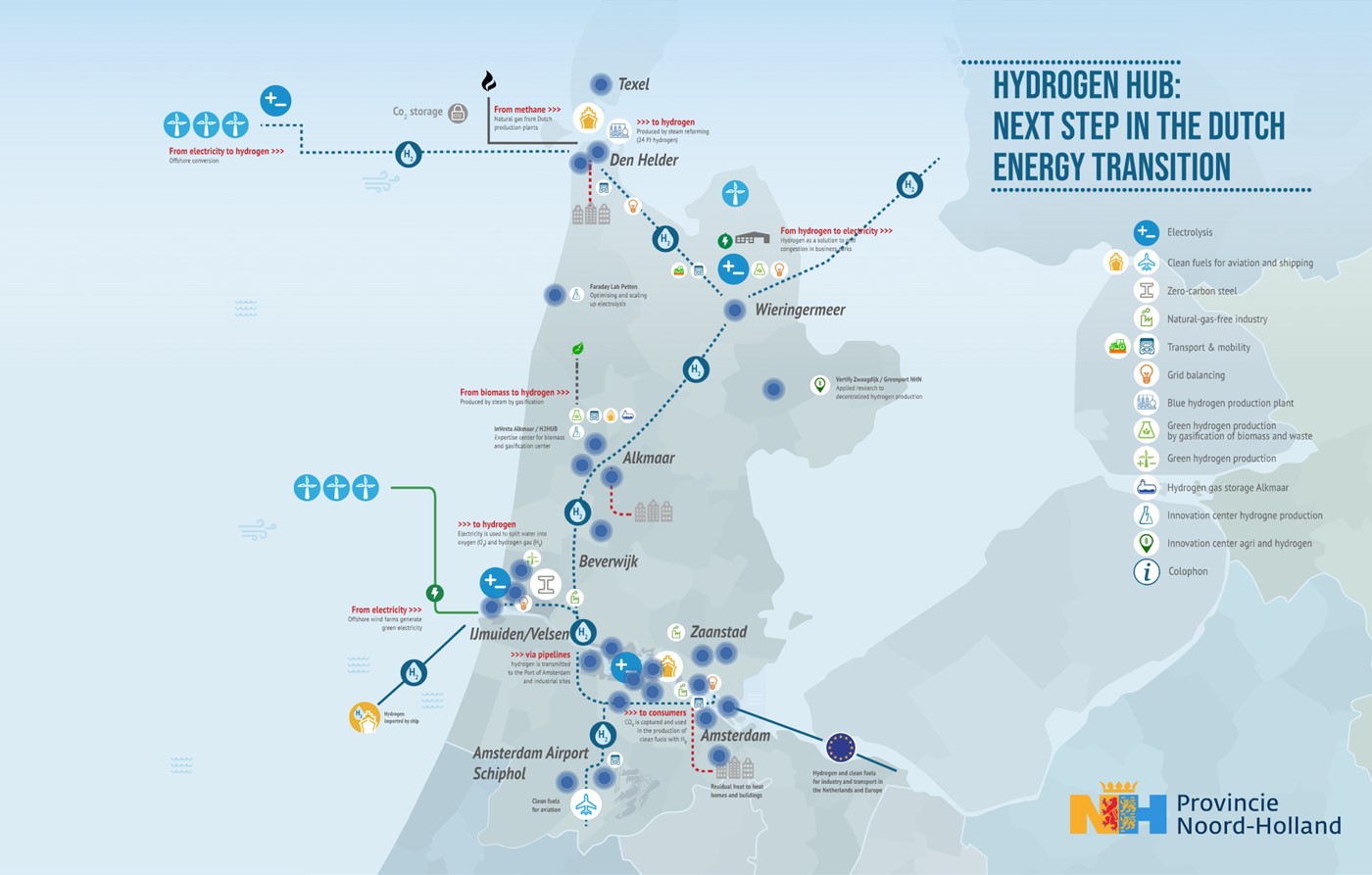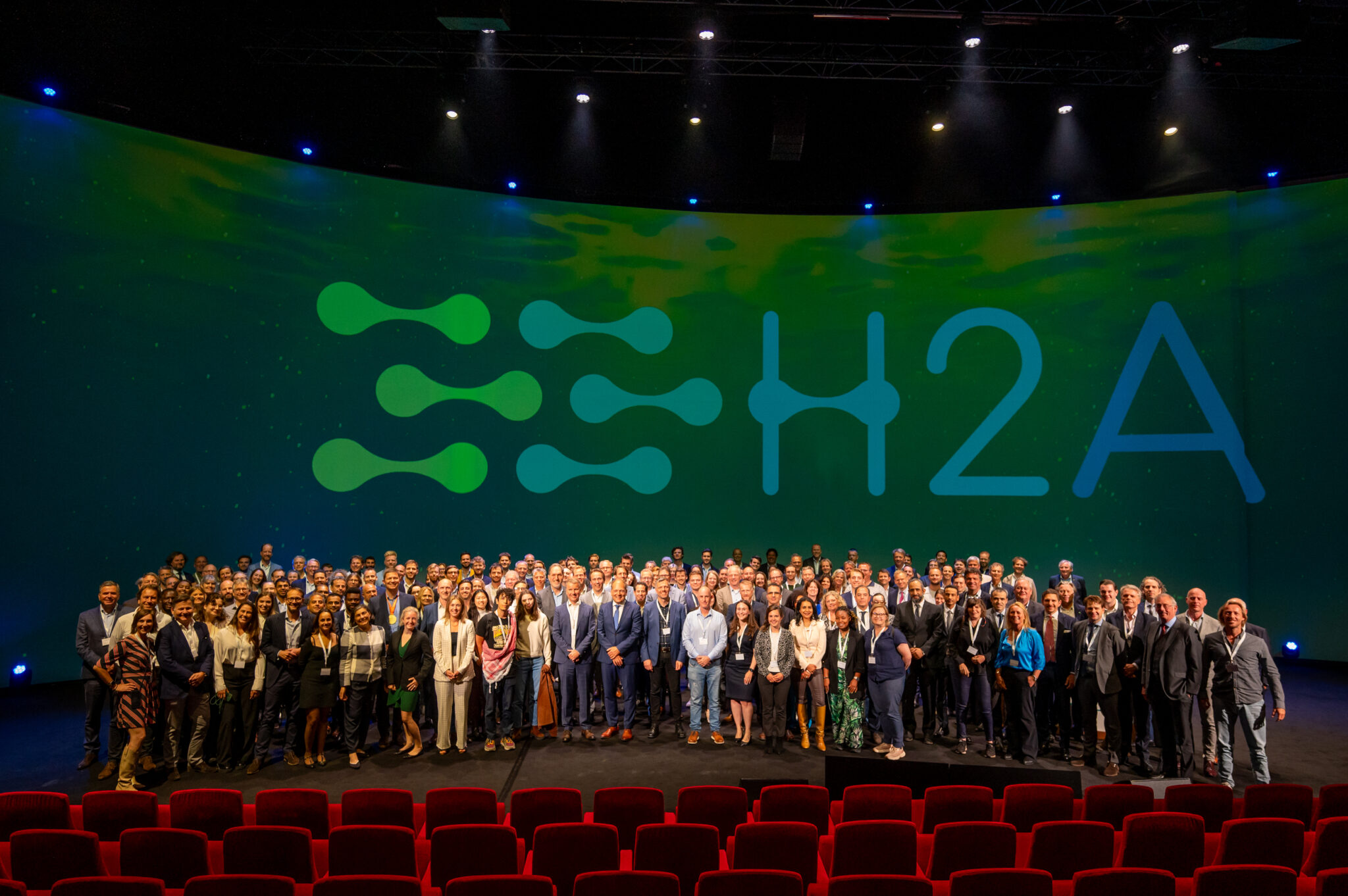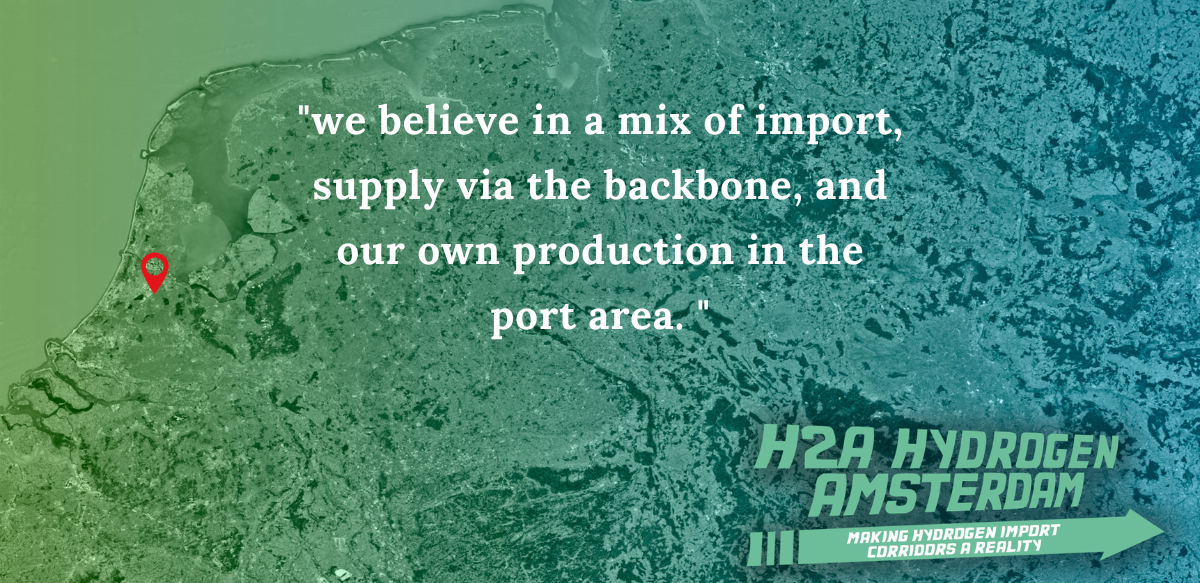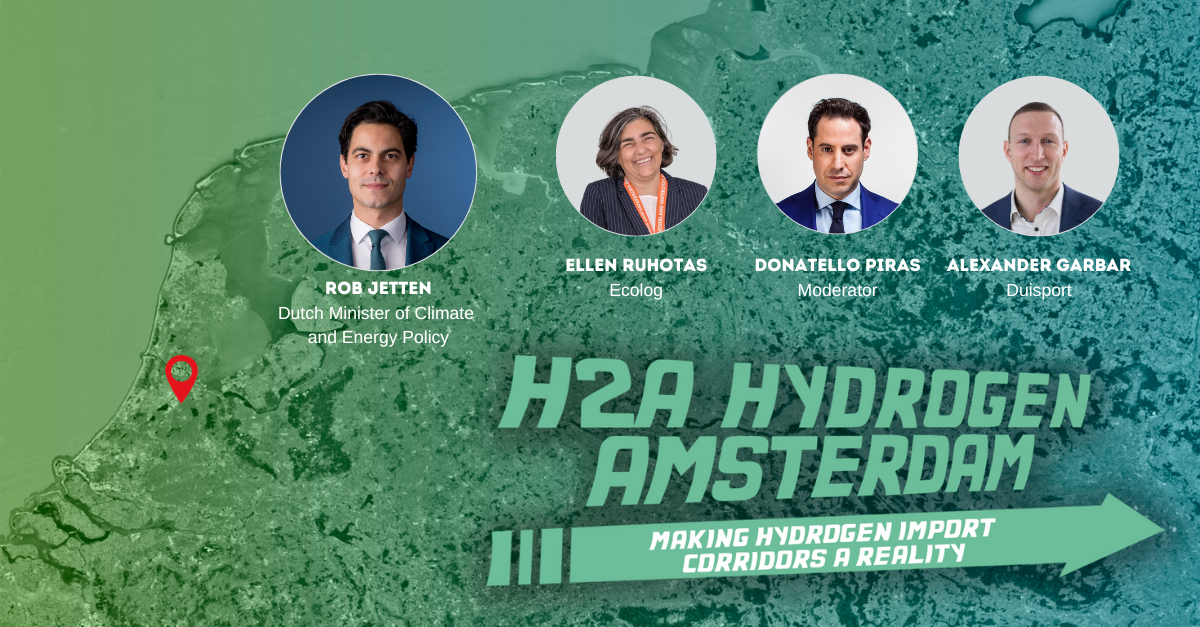H2A
Importing green hydrogen via the port of Amsterdam
About H2A (Hydrogen to Amsterdam)
H2A is a consortium of local companies and international partners, who joined forces to import green hydrogen via the port of Amsterdam. Due to its geographic location, existing infrastructure and assets, the port of Amsterdam is uniquely positioned to import, store, release and distribute different modalities of green hydrogen to local offtakers and into Northwest Europe. The H2A consortium has been initiated by Evos, SkyNRG, Port of Amsterdam, Zenith Energy Terminals (now Sunoco LP), Hydrogenious (Germany), Electriq Global (Israel), the Municipality of Amsterdam and the Project Office North Sea Canal Area; all significant players in the hydrogen value chain.
In Northwest Europe, demand for green hydrogen is expected to grow exponentially in the coming decades and will exceed the local production potential. In order to meet this growing demand, the import of green hydrogen from countries around the world will be necessary. Recognised as a leading international energy hub, the port of Amsterdam is ready to play a leading role in the import of green hydrogen.
Why the port of Amsterdam?
- As an energy hub, the port features suitable terminals and infrastructure that can be reused or repurposed to receive, store and distribute multiple hydrogen vectors, including liquid hydrogen, LOHC, LIHC and SIHC.
- The port offers the needed nautical infrastructure for the transhipment of hydrogen, including quays, jetties and sufficient draught. The local demand for green hydrogen is expected to be high, with industrial, production facilities and transport hubs in close proximity to the Amsterdam port area, such as Tata Steel and Schiphol.
- The port of Amsterdam has access to three of the nine European TEN-T corridors, meaning the port is well positioned to continue to be a key energy supplier for the European hinterland.
Multiple hydrogen vectors
There are several technologies for transporting hydrogen over long distances. The existing assets and infrastructure in the port of Amsterdam allow the handling of hydrogen through multiple vectors:
- Liquid hydrogen: cooling hydrogen down to a temperature of minus 253 degrees, will convert it into liquid form, making it suitable for transport
- Carrier technologies: Carrier technologies offer cost effective, flexible and safe solutions for transporting green hydrogen over long distances to the port of Amsterdam. After bonding the hydrogen to carriers, shipping it to its destination and then releasing it from the Carrier, the hydrogen is ready for use.
The port of Amsterdam will be able to receive, store and distribute non-toxic hydrogen carriers:
- LOHC : a liquid organic hydrogen carrier
- LIHC: a non-organic carrier
- SIHC: solid non-organic carrier




